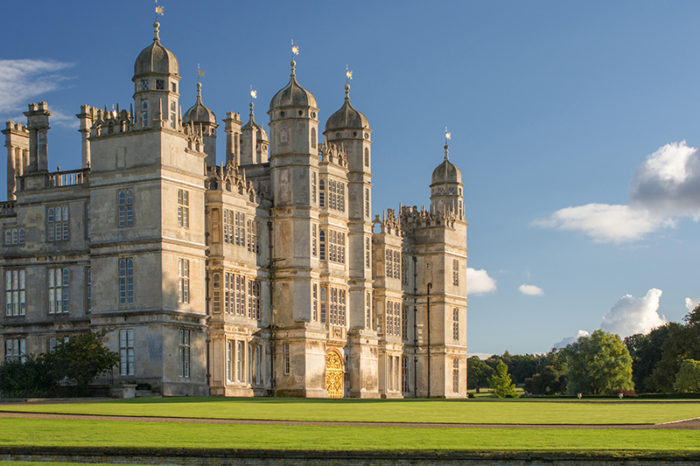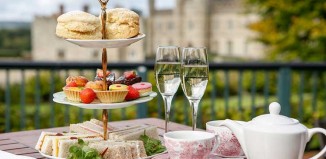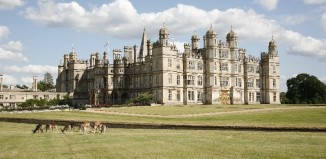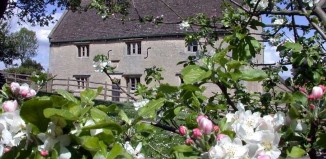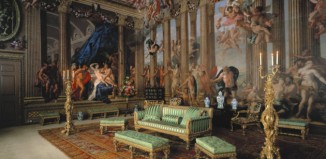Burghley House
Residents for more than 430 years, the Cecil family has enriched Burghley House with world-class art, royal intrigue and Oscar-winning stories
When it comes to interior design, not many people would choose to have scenes from Hades – complete with the Grim Reaper and plenty of unfortunates thrashing about in eternal torment – painted in their homes.
However, this is exactly the scene you will find in Lincolnshire’s Burghley House. The so-called Hell Staircase by Italian decorative artist Antonio Verrio manages to be beautiful, skilful and completely unsettling, not least because the staircase leads to Verrio’s masterpiece, The Heaven Room – a contrasting light and airy space which is full of mythological scenes in pinks and blues.
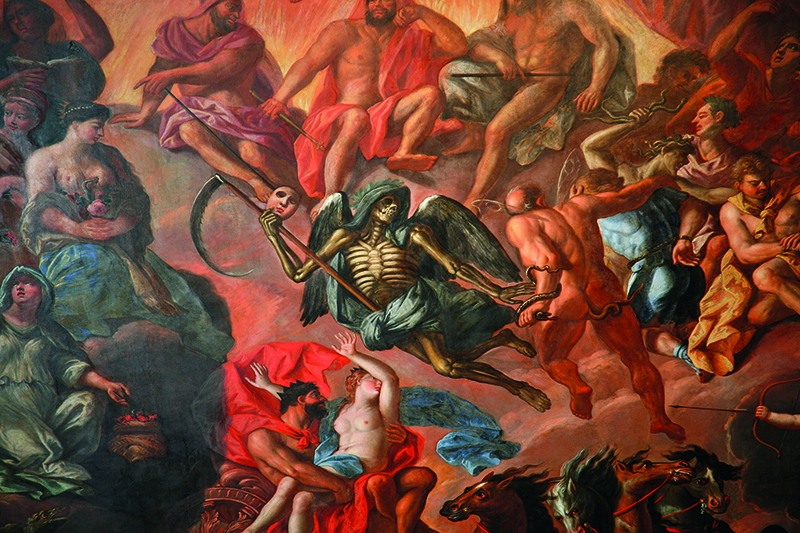
This sort of surprising quirk is typical of Burghley, an Elizabethan beauty veneered with windows and crowned by turrets that make it impressive when approached from any given angle. In fact, it is so grand and imposing that it’s hard to believe it once played second fiddle to another property.
Nevertheless, when construction commenced in the mid-16th century, the owner, Sir William Cecil, the 1st Baron Burghley and chief advisor of Queen Elizabeth I, abandoned proceedings to focus on the construction of Theobalds House in Hertfordshire which, although now no longer standing, was Cecil’s great “prodigy house” – a name given to grand English country houses built by courtiers.
That change of priorities meant that Burghley was left in construction limbo for almost 30 years, with the north front finally completed in 1587.
The gardens were modernised in 1754 by Lancelot ‘Capability’ Brown, who was the mastermind behind the outdoor space of any stately home worth its salt. Among his additions were the orangery – a must-have accessory for any voguish property at the time – and the summerhouse with its gothic features. Brown also did away with the entire northwest wing, so that his epic parkland could be admired in one clear, sweeping vista – one that remains impeccably presented and populated by a herd of beautiful deer.
Burghley is still connected to the same Cecil family today. The 18th Baron Burghley, Michael Exeter, lives in Oregon after being born and raised in Canada, where his son, Anthony, Lord Burghley, lives. It is the Baron’s cousin, Miranda Rock, who acts as house director and lives at Burghley with her family.
“I oversee the maintenance and conservation of the building, its collections and environment as well as making a visit to Burghley the best possible experience for our guests,” says Rock, whose role was created by her grandfather to ensure Burghley would “always keep the warmth and tradition of a family home as well as being preserved for the future”.
Rock’s grandfather was David, Lord Burghley, a celebrated sportsman who won gold in the 400 metres hurdles at the 1928 Summer Olympics in Amsterdam. It was this Lord Burghley who inspired the part of Lord Andrew Lindsay in the 1981 Oscar-winning film Chariots of Fire. Burghley, during his time at Cambridge University, was the first to run the 400 yards around the Great Court at Trinity College in the 43.6 seconds that it takes for the chimes to strike 12 o’clock. The Great Court Run has become an annual campus tradition ever since.
Rock is clearly proud of her heritage and she certainly takes her role seriously, with the house’s popularity resulting in more than 120,000 people visiting the house and gardens in 2017, all no doubt impressed by Burghley’s ability to retain tradition.
“It is a great honour to live in a place which so many earlier generations of my family have lived and worked,” says Rock. “They have endowed it with many wonderful works of art and I feel immensely grateful to play my part in sharing these with our many visitors and making sure they are preserved for future generations to come.”
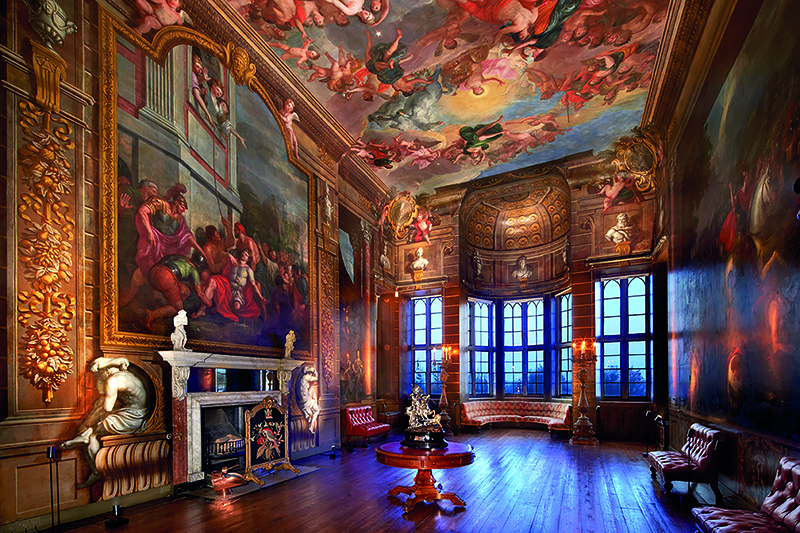
Parts of the grounds add a modern twist to this traditional home. Otherworldly, the latest exhibition in the Sculpture Garden, boasts spaceships and other surreal pieces including a man polishing the moon. Burghley has, since William Cecil conceived of it, been somewhere for the strange to sit cheek by jowl with convention. One of the highlights of Burghley is surely the Garden of Surprises, a collection of horticultural curiosities that include swivelling Caesar busts and a mirrored maze. The garden was opened in 2007 and inspired by a similar space at Theobalds House, where Cecil’s love of gardening first flourished. The Garden of Surprises is also something of a monument to water with plenty of pools and jets that make it a favourite for children on hot days.
If Burghley’s grounds and façade aren’t impressive enough, just wait until you step inside. The sheer scale is breathtaking with more than 110 rooms including 35 ‘major’ rooms – that is to say state rooms, drawing rooms and dining rooms. The roof is the best part of an acre in size. The art collection is a feast for the eyes and one of the most impressive in the world, not least because of the abundance of 17th-century Italian paintings.
In this respect, the house owes no small debt of gratitude to the 6th Baron Burghley, John Cecil, who travelled extensively in Italy to add to his collection. He was one of the most notable Britons to undertake a Grand Tour – a coming-of-age visit to mainland Europe enjoyed during the 17th and 18th centuries by wealthy young aristocrats who visited the Continent keen to gain exposure to historic culture and acquire decorative treasures with which to fill their family seats.
Aside from the fine art, Burghley is home to clocks, tapestries and other sets of curios beyond one’s wildest dreams. The collections of Chinese snuff bottles and Japanese ceramics, for example, are some of the finest of their kind in the Western world.
The collection of miniature paintings is also excellent and extensive – and the portraits serve as a beautiful visual history of Burghley’s various residents.
As with the gardens that delight and surprise at every turn, a house of this scale and imagination offers plenty of exciting elements that are not necessarily immediately obvious on first visit. One such space is the Prospect Room, a banqueting room in the West Range only accessible from the roof.
“It was designed so that William Cecil, the 1st Lord Burghley, could look at the view – or ‘survey the prospect’ – and take some refreshment whilst he was walking on the roof, which was used for exercise during the Elizabethan period,” explains Rock.
Other less obvious highlights include the two micro-mosaic panels by Italian artist Cesare Aguatti set in the bay window of the Blue Silk Dressing Room, and the brass canopy bed in the Brown Drawing Room – the latter seems out of place until you realise it was used by Princess Victoria when she visited in 1835, two years prior to her coronation.
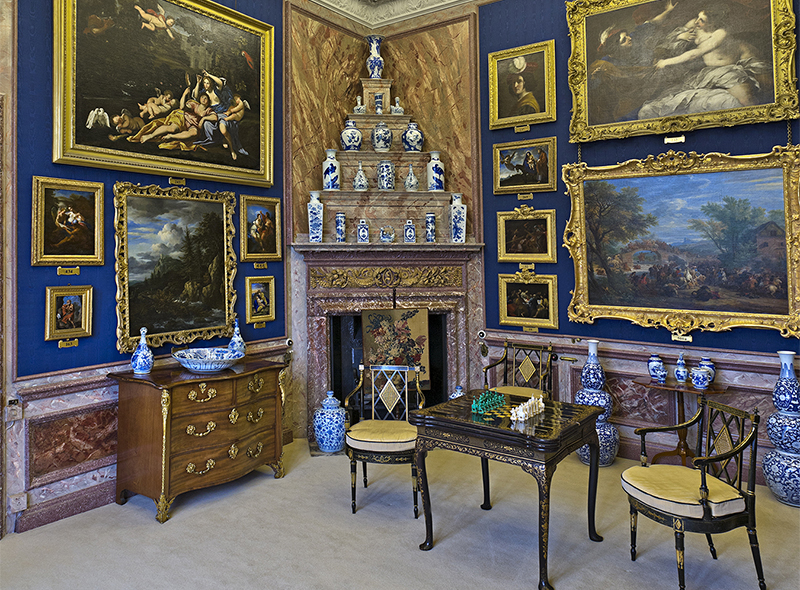
The Burghley House calendar is packed with events from film festivals and Halloween celebrations to the famous Land Rover Burghley Horse Trials. The latter has taken place on the estate every summer since 1961, with some of the world’s greatest equestrians and horses joining the three-day event. The Horse Trials also bring about another royal connection, as members of the Royal Family not only attend the event but also compete in it. Both Princess Anne, as she was known in 1971 when she won the European Champion title, and her husband Captain Mark Phillips have won at Burghley, while their daughter Zara Phillips has also competed.
“We have worked hard to make sure that the whole year is exciting at Burghley, so no month is ever dull,” says Rock. “For me though, whilst its lovely to have these events and see so many people enjoying all that Burghley has to offer, it’s also wonderful to walk through the State Rooms on any open day and see individuals of all ages engaging with the collections and the history that is all around us.” We couldn’t agree more.

